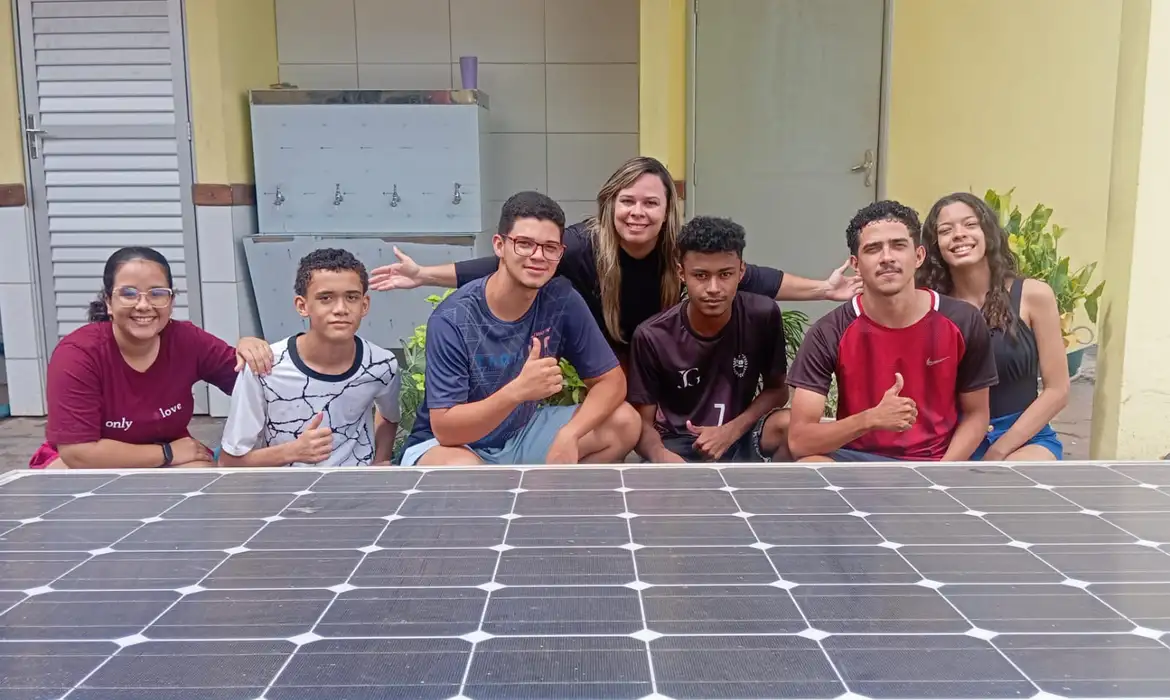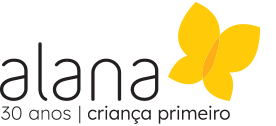World Environment Day marks the announcement of the winners
By Fabíola Sinimbú – Reporter at Agência Brasil
Published on 06/05/2025
On this June 5th, World Environment Day, six youth-led projects from every one of Brazil’s biomes were recognized for presenting proposals that combine conservation and environmental solutions with the appreciation of traditional knowledge from local communities.
These initiatives won the Criativos Escola + Natureza Award, which encourages children and adolescents to transform their realities through youth empowerment and is promoted by Instituto Alana.
“We now know that children are the population most affected by climate change and racial inequalities worldwide, yet they are not always considered when it comes to solving these problems—or even listened to about what affects and troubles them,” says Ana Cláudia Leite, an education and childhood culture specialist at Instituto Alana.
Elementary and high school students and their educators will receive an online educational journey, which will lead them to activities related to the United Nations Climate Change Conference (COP30).
According to Ana Cláudia, the goal of this journey is to foster exchange between school communities and their territories, enable the technical improvement of the projects, and boost visibility and social impact.
“There will be content, connections, and experiences that can expand these children ability to take action in their territories and strengthen these projects so that they can scale up, influence their surroundings, and foster more dialogue and partnerships—whether with the private sector, government, or third sector.”
The award also includes a financial incentive of R$12,000 per team, with R$10,000 for the students and R$2,000 for the educator or adult mentor. The winners were chosen from nearly 1,600 projects from 738 municipalities across the country.
“We received projects from quilombola* regions, from communities linked to Indigenous groups, and from areas with multiple Indigenous communities close to schools. There are also projects from dense urban areas. They’re diverse not only in what they propose and how they foster social transformation, but also in the students’ life stories,” explains Ana Claudia.
Biomes
In the Caatinga biome, in the town of Carnaíba, Pernambuco, students at Paulo Freire State Technical School developed a low-cost filter made from pine husks and activated charcoal to reduce the toxicity of manipueira, a by-product of cassava flour production with high pollution potential.
“The girls who live in the Quilombo do Caruá community noticed that even though the spaces where cassava flour is milled and cooked are vital as sources of income and symbols of resistance, they’re also a place that produces a large amount of waste. So, they proposed a solution to the problem they observed,” explains Gustavo Bezerra, the teacher who supervised the project.
In the Cerrado biome, students from the State Institute of Education, Science and Technology in Codó, Maranhão, created an autonomous water reuse system that collects and filters water from fountains and taps for non-potable use, such as flushing toilets.
“They built the entire prototype: plumbing, barrels, the robotic part. They wanted the system to be fully automated and sustainably self-programmed to reduce both waste and human intervention. They did everything themselves, without any engineers. They were their own engineers,” recalls teacher Vivian Sousa.
While in the Cerrado the solution came through engineering, in the Pantanal biome, students from the Sebastião Rolon Rural Municipal School in Corumbá, Mato Grosso do Sul, turned to art to address the frequent wildfires. After researching how rural populations can help reduce fire outbreaks, the students developed an educational theater piece to raise community awareness through culture.
“Many students are children of farmers or cattle ranchers. Wildfires are common here. They often didn’t know who to call or what to do when fires happened. They said there was a lack of information, and until then, no one really knew what to do. Through the project, they began to find answers,” says teacher Stella de Souza.
The project was so successful that students and teachers are now working to expand its reach and the formats used.
“We intend to create books written by them, and comic books too. We’re trying to align the content with other subjects so we can expand the concept and reach not only adults but other children as well,” Stella adds.
The pursuit of balance with nature also came from diverse experiences. In the Amazon biome, inspired by the success of Indigenous community practices, students from the Amazonas Institute of Education in Manaus developed a project to integrate traditional knowledge into the school curriculum.
The phrase, “You, with your knowledge, can help us. And we, with ours, can help you,” spoken by a member of the Tukano people and heard by students during a visit to the Bahserikowi Indigenous Medicine Center, had a lasting impact. After that experience, exchanges increased, and transformation happened inside and outside the school.
“I didn’t know back then that some of my students were Indigenous. Later, I found out from one mother that she had told her daughter not to say she was Indigenous. She was afraid her daughter would be discriminated against or bullied like she had been,” recalls teacher Márcia Gomes.
As the project progressed, those students began to proudly share their knowledge and heritage as guardians of sustainable living.
“When I saw them finally saying they were Indigenous, talking about their culture and traditions, I realized the project had gone beyond learning—it was about self-worth and serenity,” Márcia emphasizes.
On the opposite end of the country, in Porto Alegre, Rio Grande do Sul, a group of students from Saint-Hilaire Elementary School was inspired by Futuro Ancestral, a book by Ailton Krenak, to deepen their connection with nature.They saw the nearby Saint-Hilaire Park as a potential space for connection and realized how distant the community had become from nature.
“They started talking about it—‘We’ve never been to the park. We could go, but it’s always burning.’ They began monitoring it and saw fires becoming frequent after reading the book. One of them said, ‘We could make a project about this,’” recalls teacher Maria Gabriela Souza.
A series of educational, artistic, and environmental activities in the park was developed by the students to raise awareness in the community.
“They created storytelling sessions, theatrical performances, and a literary fair using works by Indigenous and Black authors like Krenak and Antônio Bispo. They worked hard, created educational kits. It was a success. The whole school got involved,” the teacher says.
Traditional knowledge from shellfish gatherers and artisanal fishers in Estância, Sergipe, inspired students and teachers at the Federal Institute of Sergipe to develop an environmental education model for conserving the Atlantic Forest biodiversity found in mangroves and coastal scrublands.
The project combines multiple activities—like documentary production, trail signage, and flora and fauna identification—bringing together the traditional community, students, and teachers in immersive biome experiences.
“There’s a guided trail led by shellfish gatherers and students, and a ‘sustainability bike ride,’ where one student rode alongside her grandmother. We aim for strong social inclusion, beyond the Institute and partner schools, to involve the community and especially families,” says teacher Márcia Santos.
She notes the project also fosters youth leadership.
“They took an active role in this educational process because they are also teaching. The idea is for young people to spread this environmental education involvement so that others in the community can also engage,” she adds.
The Award
Created in 2015, the Criativos da Escola Award is promoted by Instituto Alana, a nonprofit organization focused on children’s rights. Its goal is to encourage youth to transform their realities and build leadership through the Design for Change methodology, developed by Indian educator Kiran Bir Sethi.
Complete list of winning projects by biome:
- Amazon | “Dialogue with Nature: Indigenous Peoples of the Amazon and Sustainability”, Amazonas Institute of Education, Manaus (AM)
- Cerrado | “Water Reuse System Prototype for Promoting Sustainability and Responsible Use of Natural Resources”, State Institute of Education, Science and Technology of Maranhão, Codó (MA)
- Caatinga | “Filtropinha: From Waste to Resource”, Paulo Freire State Technical School, Carnaíba (PE)
- Atlantic Forest | “Ecotech”, Federal Institute of Sergipe, Estância (SE)
- Pampa | “Putting the Heart in Rhythm with the Earth: Reforesting Minds and Hearts”, Saint-Hilaire Elementary School, Porto Alegre (RS)
- Pantanal | “Fires in the Pantanal”, Sebastião Rolon Rural Municipal School – Nazaré Extension, Corumbá (MS)
*Quilombos are hinterland settlement founded by people of African origin as part of resistance movements against enslavement


